1.) Albeck, Chanoch / Hanokh (1940-1944) Hebrew University / Talmudic Studies
 Hanoch Albeck (1890 – 1972) was a professor of Talmud at the Hebrew University in Jerusalem. He was one of the foremost scholars of the Mishna in his time and…one of the founders of the scientific approach to the study of the Mishna.
Hanoch Albeck (1890 – 1972) was a professor of Talmud at the Hebrew University in Jerusalem. He was one of the foremost scholars of the Mishna in his time and…one of the founders of the scientific approach to the study of the Mishna.
2.) Altmann, Berthold (1938-1944) University of Chicago Library / History
Berthold ALTMANN, Ph.D. (1902-1977); appears to me to have commenced work w/ US Army Research Labs circa 1940, and no later than 1950, &c.
“In 1927 it [Eho-Altissa] was taken over in by Emil Hofert and later continued by Berthold Altmann. In the early 1930s the company was successfully making box cameras. …” www.camerapedia.org/wiki/Eho-Altissa / Wrote “Studies in Medeviel German Jewish History“, pub. 1940, funded by American Academy for Jewish Research. / “The Autonomous Federation of Jewish Communities in Paderborn [1941]” / “…As evinced by Berthold Altmann and Harry Moskowitz “Dispersal[1] – A Selected Reading List” in Bulletin of the Atomic Scientists Volume 7, no 9, 1951, pp. …” / “Dr. Berthold Altmann, “Freemasonry and Political Parties In Germany“, p. 278 of the American Masonic publication, New Age, May, 1955., cited by Paul Fisher, …” / “Part II: Test results and an analysis of ‘recall ratio’. by Berthold Altmann. 1965. The ABC (Approach-by-Concept) method has been designed to use the …” / A Natural Language Storage and Retrieval (ABC) Method: Its … “Berthold. Altmann. J. Chem. Doc., 1966, 6 (3), 154-157• DOI: 10.1021/c160022a012 • Publication … BERTHOLD ALTMANN. Harry Diamond Laboratories [2], Washington, …”pubs.acs.org/doi/abs/10.1021/c160022a012 / “PART 1. LINGUISTIC PROBLEMS AND OUTLINE OF A PROTOTYPE TEST, AUG 1968. Authors: Berthold Altmann; Walter A. Riessler; HARRY DIAMOND LABS ADELPHI / MD …” www.stormingmedia.us/cat/sub/subcat123-266.html / HDL-TM-70-25 COMPARISON OF rDL SDI SERVICES BASED ON A PRELIMINARY … “Berthold Altmann. October 1970. U.S. ARMY MATERIEL COMMAND. HARRY. DIAMOND. LABORATORIES …. Berthold Altmann. S. REPORT DATE. 70. TOTAL NO, OF PAGES …” handle.dtic.mil/100.2/AD712971 / HDL-TM-71-41 AUTOMATED SDI SERVICES by Berthold Altmann January 1972 “Berthold Altmann. January 1972. U.S. ARMY MATERIEL COMMAND. HARRY DIAMOND LABORATORIES. _. _. WASHINGTON. D.C. 20438. SAPPROVED …” handle.dtic.mil/100.2/AD739909
[1] “Dispersal” was a campaign to permanently decentralize American cities before the USSR might acquire nuclear weapons to destroy, for the first time, an American city with only one bomb. A short-lived civil defense concept, dispersal was an idea that was rapidly outpaced in mid-1950s by the vast number and power of atomic weapons. No longer could there be hope to (simply) flee nuclear anhilation.” http://h-net.msu.edu/cgi-bin/logbrowse.pl?trx=vx&list=h-urban&month=9612&week=a&msg=sc5WMNuBqm3kYjXuEg1NdA&user=&pw= ]
[2] http://en.wikipedia.org/wiki/Harry_Diamond_Laboratories
3.) Altschul, Eugen, 1933-1942 University of Minnesota / Economics
(1887-1959) Eugen Altschul was born in Latvia (Libau, Lettland–Liepaja, Latvia) in Eastern Europe…chaired the Frankfurt Society for Research on Business Cycles since 1926 and edited a German edition of Wesley Clair Mitchell’s standard work Business Cycles in 1931…first emigrated to London in early 1933 and then to the US in December of that year…became a researcher at the NBER (National Bureau of Economic Research) from 1933-39 before he also got a job in the Roosevelt administration…went to work for U.S. Tariff Commission (for one thing). Professor of Business Administration and Economics: University of Minnesota (1938- then at the University of Kansas, Kansas City in 1946-)
Some writings: “Technical Progress and Agricultural Depression” for NBER with Dr. Frederick Strauss (Nov., 1937) / “National Income and Capital Formation, 1919-1935″ (1937) / The Spirit of Russian Economics, Reviewed by Altschul July, 1945 / Eugen Altschul & Erwin Biser, “The Validity of Unique Mathematical Models in Science” (1948) |
* Frank Altschul – Sec. of CFR (1944-72) “Altschul was a senior partner of Lazard Freres, and a key member of the Council on Foreign Relations from 1934 to 1972, including its Secretary from 1944 and Vice President from 1951 to 1971. His sister, Edith Altschul Lehman, was married to New York Governor Herbert H. Lehman. Their son, John Robert Lehman, was managing director of Lehman Brothers. / Altschul was the first president of General American Investors Company, Inc. when it was established in 1927 / Charles Altschul etc. http://www.smokershistory.com/lazard.htm / Arthur G. Altschul (B.A. 1943) – Partner of Goldman, Sachs & Co. (son of Frank Altschul).
4.) Bargmann, Valentine (1940-1944) Inst. for Advanced Study, Princeton / Physics
(1908-1989) born in Berlin, Germany / Arrived at Princeton University in 1937 and began working as Einstein’s assistant at the Institute for Advanced Study. In 1943, Bargmann began working with John von Neumann, a member of the United States Atomic Energy Commission, on war-related research projects.
5.) Baumgardt, David (1934-1945) Library of Congress, Wash DC / Philosophy
Born in Erfurt on April 20, 1890 / He emigrated to Great Britain in 1935 and to the United States in 1939, where he taught at various colleges and was consultant in philosophy to the Library of Congress. He died in New York City on July 21, 1963.
6.) Beck, Guido (1933-1942) Univ. of Kansas / Physics


 Worked with Richard Gans on Argentina’s Nuclear Project…
Worked with Richard Gans on Argentina’s Nuclear Project…
(August 29, 1903 – October 21, 1988) born in what was then the town of Reichenberg in Austria-Hungary, and is now Liberec in the Czech Republic. He studied physics in Vienna and received his doctorate in 1925, under Hans Thirring. He worked in Leipzig in 1928 as an assistant to Werner Heisenberg. A combination of the troubled political climate of Europe in the 1930s, his own restlessness, and the Nazi persecutions in Germany, made the Jewish-born Beck a traveller in those years. He worked in Prague, the United States, the former Soviet Union (at Odessa University, 1935-1937), and finally France, where he was imprisoned when World War II broke out. In 1941, he fled to Portugal, and in 1943 he emigrated to Argentina.
In Argentina, he was instrumental in training several Argentinian physicists, including José Antonio Balseiro, and had a profound impact in developing physics in Argentina. He moved once more, this time to Brazil, in 1951, where his influence in developing physics was also great.
He was called back to Argentina in 1962, after the death of Balseiro, and continued his work at the Instituto Balseiro. / In 1975 he returned to Brazil, and worked in the Centro Brasileiro de Pesquisas Físicas (CBPF). / Apart from his influence as a teacher in South America he contributed to a theory of beta-decay, which was later superseded by a more complete theory by Fermi.He was a friend of the famous writer Ernesto Sabato. / He died in a car accident in Rio de Janeiro in 1988.
7.) Beck, Maximilian (1934, 1938-1939) Philosophy
‘…Among these the best known are Maximilian Beck and Gerda Walther.” “MAXIMILIAN BECK (-1950), who after escaping from his native Czechoslovakia in 1938 spent …”
books.google.com/books?id=C8G1HfOJz3AC&pg=PA188&lpg=PA188&dq=%22Maximilian+Beck%22&source=bl&ots=XpmKr-WQ6n&sig=6D7JhqtqvneZYct-V3O0tQ1J5Yo&hl=enThe Cognitive Character of Aesthetic Enjoyment / (1944). Existentialism. / (1942). Walt Whitman’s Intuition of Reality / (1941).
8.) Behrendt, Richard Fritz (1934-1944) Inter-American University, Panama / International Affairs
Richard Fritz Walter Behrendt…Weltbank (World Bank) and UNO (United Nations Organization)
6 February 1908, Gliwice, Upper Silesia – 4 August 1973, Berlin) was a German sociologist. –wiki.
Richard F. Behrendt war der Sohn eines Fabrikbesitzers in Gleiwitz (jetzt Gliwice, Polen). Er studierte an der Handelshochschule Nürnberg, dann an den Universitäten in Köln und in Basel (dort 1931 Habilitation) und an der London School of Economics. Von 1932 bis 1934 freie journalistische Tätigkeit, dann 1935-40 ordentlicher Professor für Soziologie und Nationalökonomie an der Universität Panama.
1940-53 Lehrtätigkeit an verschiedenen amerikanischen Universitäten, Beratertätigkeit in Peru, Guatemala, Puerto Rico und Panama, u. a. im Auftrag der Internationalen Bank für Wiederaufbau und Entwicklung (Weltbank) und der UNO. 1953 außerordentliche Professur für Soziologie und Wirtschaftsorganisation an der Universität Bern, 1956 Ordinarius, 1960 Direktor des Instituts für Soziologie und Sozioökonomische Entwicklungsfragen der Universität Bern. 1965-73 ordentlicher Professor für Soziologie an der Freien Universität Berlin.
‘Economic Nationalism in Latin America’: book, and at least 18 in German.
9.) Berger, Adolf (1941-1944) New School for Social Research, NYC / Law
Encyclopedic Dictionary of Roman Law, 1953
“Refugee lawyers faced an almost impossible situation following their emigration. … Despite his precarious financial situation, Adolf Berger managed to …”
books.google.com/books?id=ddl01gARwVkC&pg=PA124&lpg=PA124&dq=%22Adolf+Berger%22+%2B+refugee&source=bl&ots=sTeHxskmQD&sig=0313W0ssQWHkIFnPRFP21by-cOo&hl=enlawyer turned historian, / “laws different here, made law practice difficult, etc.”
Adolf Berger, Ernst Rabel, and Rafal Taubenschlag were also refugee historians of law. For reasons explained in Appendix 1, these historians are not …”
“… Artur Baron, Kurt Baron, Sally Baron, Adolf Berger, M.J. Benardete, …… Dorothy Frances Buxton, The Economics of the Refugee Problem [London? ….. Moshe Silberg, “Law and Morals in Talmudic Law,” The Hebrew University of …”
www-sul.stanford.edu/depts/spc/xml/m0580.xmlI.11 Law I.12 Mathematics I.13 Musicology I.14 Philology …. Council for Assisting Refugee Academics see Society for the Protection of Science and Learning …… Adolf Berger; Francisco-Blasco y Fernandez Moreda; Franz Böhm; …”
http://www.bodley.ox.ac.uk/dept/scwmss/wmss/online/modern/spsl/spsl.html* Salo Baron: correspondent – Salo Wittmayer Baron was instrumental in establishing Jewish Studies as an academic discipline in the United States. An extraordinarily prolific historian, Baron also played an exceptional role in American Jewish organizational life. Baron was born in 1895 in Tarnow, now in Poland but then part of Austrian Galicia. His parents, Elias Baron and Minna Wittmayer Baron, were orthodox Jews, and Elias Baron was a banker and Jewish community leader.
10.) Bergmann, Gustav (1938-1944) State Univ of Iowa / Mathematics

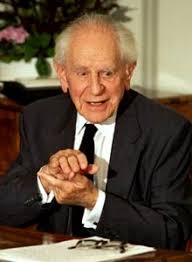 (1906-1987) Gustav Bergmann was an ontologist born in Vienna, Austria. / In his time in the United States (1938-) a professor of philosophy and psychology at the University of Iowa where he taught and studied until his death in 1987. / worked with Albert Einstein / assisting Einstein’s work in physics in 1931.
(1906-1987) Gustav Bergmann was an ontologist born in Vienna, Austria. / In his time in the United States (1938-) a professor of philosophy and psychology at the University of Iowa where he taught and studied until his death in 1987. / worked with Albert Einstein / assisting Einstein’s work in physics in 1931.
May Brodbeck (his student) May Brodbeck | Jewish Women’s Archive
“She taught high school chemistry and later participated in the Manhattan Project for development of the atomic bomb during World War II. … There, under Gustav Bergmann, she took her master’s degree (1945) and her doctorate (1947) in …”
jwa.org/encyclopedia/article/brodbeck-mayhttp://en.wikipedia.org/wiki/List_of_Austrian_Jews
“the philosopher of science Gustav Bergmann, a logical positivist, who provided the sort of…”
11.) Berl, Ernst (1933-1945) Carnegie Inst. of Technology (Pittsburgh, Pa.) / Chemistry
 Ernst Berl (1877-1946), who came to the United States to work on explosives and chemical warfare.
Ernst Berl (1877-1946), who came to the United States to work on explosives and chemical warfare.
Dr. Ernst Berl, chemical-warfare specialist for Austria-Hungary in World War I, and for the U.S. in World War II, etc.
12.) Bernstein, Felix (1933-1936, 1939-1940, 1943-1945) New York University / Mathematics

 (1878-1956) “…His father was Julius Bernstein (1839-1917) who was a leading physiologist. Julius’ father, Felix’s grandfather, was Aron Bernstein (1812-1884), a political writer, scientist, journalist, and publisher who, as a founder of the Berlin Congregation of Reform Judaism in 1845, played a major role in synagogue reform in Germany [one of Aron’s books influenced Einstein to pursue science]…he and family “managed to emigrate in 1934”, according to http://www.gap-system.org/~history/Biographies/Bernstein_Felix.html, but: “When the first laws against Jewish academicians went into effect in Germany in April 1933, mathematician Felix Bernstein of the University of Göttingen was in the United States and chose to remain in New York” according to another, by me uncited and forgotten source / Analyzed human blood groups / algebraic method to measure the frequency of gene linkages among the human population. / Boas strove to find money to keep him at Columbia / Bernstein stayed at Columbia University until June 1936 at which point he went to New York University / received a $4,000 salary paid in equal parts by the Emergency Committee and Rockefeller Foundation. / “He did spend a large amount of his time on social causes when in the United States and on these issues he collaborated with his long time friend Einstein. He also put a huge effort into trying to find positions for other European scientists who had been forced to flee from Europe to the United States due to Nazi policies.”
(1878-1956) “…His father was Julius Bernstein (1839-1917) who was a leading physiologist. Julius’ father, Felix’s grandfather, was Aron Bernstein (1812-1884), a political writer, scientist, journalist, and publisher who, as a founder of the Berlin Congregation of Reform Judaism in 1845, played a major role in synagogue reform in Germany [one of Aron’s books influenced Einstein to pursue science]…he and family “managed to emigrate in 1934”, according to http://www.gap-system.org/~history/Biographies/Bernstein_Felix.html, but: “When the first laws against Jewish academicians went into effect in Germany in April 1933, mathematician Felix Bernstein of the University of Göttingen was in the United States and chose to remain in New York” according to another, by me uncited and forgotten source / Analyzed human blood groups / algebraic method to measure the frequency of gene linkages among the human population. / Boas strove to find money to keep him at Columbia / Bernstein stayed at Columbia University until June 1936 at which point he went to New York University / received a $4,000 salary paid in equal parts by the Emergency Committee and Rockefeller Foundation. / “He did spend a large amount of his time on social causes when in the United States and on these issues he collaborated with his long time friend Einstein. He also put a huge effort into trying to find positions for other European scientists who had been forced to flee from Europe to the United States due to Nazi policies.”
13.) Beutler, Hans (1934-1944) U of Chicago / Physics

 Hans Beutler b: 1896 Reichenbach (im Vogtland) d: 1945 Chicago IL
Hans Beutler b: 1896 Reichenbach (im Vogtland) d: 1945 Chicago IL
Descendants of Aaron Beutler (formerly head of the dept at the kaiser wilhelm institute for physical chemistry…)
Yerkes Observatory, 1892-1950: the birth, near death, and …
“Mulliken, of the Chicago Physics Department, arranged another joint symposium … The speakers included Swings and Elvey, Hans Beutler of the campus Physics …”
books.google.com/books?id=M-m3GJzooIsC&pg=PA251&lpg=PA251&dq=%22Hans+Beutler%22+%2B+chicago&source=bl&ots=0NbXYGY10c&sig=vLFdiKCvj_1pSeHyc1Ncrl__lAY&hl=enChemistry 1966 ROBERT S. MULLIKEN / “Chicago, Ill and (winters) Distinguished Research Professor of Chemical …… in our laboratory, under the able guidance in particular of Dr.Hans Beutler …”
kristall.lan.krasu.ru/Science/Men/Malliken/1966_mulliken.pdf
Many ended up without permanent positions, such as Hans Beutler, …”
“During World War II, Mulliken served as Director of the Information Division of the Plutonium Project …… Visit, Hans Beutler, 1942. Box: 63. Folder: 16 …”
Physics Department / Council for Assisting Refugee Academics see Society for the Protection of …… Alfred Bacher; Walter Beck; Educard Bekier; Franz Bergel; Hans Beutler …”
http://www.bodley.ox.ac.uk/dept/scwmss/wmss/online/modern/spsl/spsl.htmlHans Beutler (13.4. 1896, Reichenbach im. Vogtland — 14.12.1942, Chicago), KWI für physi- …”and terms such as the Beutler-Fano profile of ……
6. Hans Beutler (13.4.1896, Reichenbach im Vogtland — 14.12.1942, Chicago), KWI für physikalische Chemie und Elektrochemie, Berlin-Dahlem, wissenschaftlicher Assistent, Privatdozent an der Universität Berlin; rassistisch verfolgt, musste im Winter 1933/34 aus dem Institut ausgeschieden, Emigration in die USA 1936; Research Associate im Ryerson Physical Laboratory der University of Chicago.
13. Strauss, Hermann geb. am 28.4.1868 in Heilbronn, jüdischer Konfession, Mitglied der DDP, nichtbeamteter a. o. Prof. (Innere Medizin), Direktor der Inneren Abteilung des Jüdischen Krankenhauses in Berlin, 1933 Entzug der Lehrbefugnis, nicht emigriert, im Juli 1942 Deportation nach Theresienstadt. Strauss starb am 17.10.1944 im KZ Theresienstadt.
Fermi suggested to Fano that, as a research project, he should try to … that had recently been observed by Hans Beutler of the University of Berlin [4]. …”
nvl.nist.gov/pub/nistpubs/sp958-lide/html/116-119.html
14.) Bieber, Margarete (1933-1945) Columbia U, NYC / Archeology
 (1879-1978) was born in 1879 in present day Poland / in 1915, during World War I, she worked for the Red Cross in Berlin / Because she was of Jewish ancestry, the “cleansing” of the universities subjected her to a forced retirement in 1933. She sold her possessions, left Germany for Oxford, and in 1934, she traveled to the U.S. where she taught at Barnard College, before joining Columbia University’s Department of Fine Arts and Archaeology.
(1879-1978) was born in 1879 in present day Poland / in 1915, during World War I, she worked for the Red Cross in Berlin / Because she was of Jewish ancestry, the “cleansing” of the universities subjected her to a forced retirement in 1933. She sold her possessions, left Germany for Oxford, and in 1934, she traveled to the U.S. where she taught at Barnard College, before joining Columbia University’s Department of Fine Arts and Archaeology.
Bieber landed in New York on 21 September 1934 / After two years at Barnard, Bieber joined the Department of Fine Arts and Archaeology of Columbia University –– later Art History and Archaeology
JOINING THE FACULTY CLUB: “Eva Lehmann Fiesel, a recognized authority on Etruscan philology who was raised as a Protestant, was hired to teach at the University of Munich on a …” http://www.brandeis.edu/hbi/pubs/Harriet%20Freidenreich%20Paper.doc
15.) Biel, Erwin Reinhold (1934-1944) Rutgers “or” Chicago U / Meteorology
“Erwin Biel, Rutgers University, New Brunswick, N.J., or University of Chicago Department of Meteorology”
A NEW MAP OF THE CLIMATES OF CHINA “and in Dr. Erwin Biel’s comprehensive. Weather and Climate of. China2. Some records for places in Sinkiang, provided by. ty. Chow, were also referred to. …” http://www.informaworld.com/index/794124293.pdfClimatology of the Mediterranean area …. (Open Library) “last modified october 27, 2008. Go. Climatology of the Mediterranean area …. by Erwin R. Biel Published in 1944, University Press (Chicago) …” openlibrary.org/b/OL20554455MReviews and Notices “Meteorology, as acknowledged, but it still is Erwin Biel’s rainfall variability map of 1929, which nobody has been willing to …” http://www.informaworld.com/index/769312553.pdfPlant communities of New Jersey: a study in landscape diversity “In a discussion of the climate of New Jersey, Erwin Biel describes the differences that occur in the growing …” books.google.com/books?id=yHnmIaudsWkC&pg=PA43&lpg=PA43&dq=%22Erwin+Biel%22&source=bl&ots=jkwoXQvAR7&sig=iSlRRZlpbCj1QN63DQhHIgHXkKY&hl=en“Elements of climatology and meteorology” / “In a discussion of the climate of New Jersey, Erwin Biel describes the differences that occur in …” / Meteorology, as acknowledged, but it still is Erwin Biel’s rainfall variability map of 1929, which nobody has been willing to …” http://www.informaworld.com/index/769312553.pdfE GEOGRAPHY – JSTOR “… Erwin Biel presents, from his encyclopaedic knowledge of the climatic literature, numerous interesting data on the microclimates of grasslands. …”
16.) Bier, Justus (1933-1944) Univ. of Louisville / History of Art
 Bier, Justus Date born: 1899 Place born: Nürnberg, Germany Date died: 1990 Place died: Raleigh, NC
Bier, Justus Date born: 1899 Place born: Nürnberg, Germany Date died: 1990 Place died: Raleigh, NC
Riemenschneider scholar, professor and director of the North Carolina Museum of Art. Bier grew up in a wealthy Nuremberg family. He attended the Humanistisches Gymnasium in that city. After graduation in 1917, he fought in the first World War 1917-18. Between 1919 and 1924 Bier studied art history, archaeology, and medieval and modern history at the universities in Munich, Erlangen, Jena, Bonn and finally Zurich. His major professors were Paul Clemen (q.v.) and Heinrich Wölfflin (q.v.). His dissertation, written under Wölfflin, was on the early work of his home town’s most famous artist, Tilman Riemenschneider. It was granted in 1924 and published the following year. Between 1924-1930 Bier he began publishing his magisterial book on Riemenschneider while lecturing (Dozent) at the Volkschule. He also contributed articles on modern architecture. In 1931 he married the art historian Senta Dietzel (1900-1978), whose brother was the gallery owner Max Dietzel, a sponsor of the Künstlergruppe Brücke shows and other modern art. From 1930-36 Bier was a curator of the Kestner Society and Museum in Hannover which mounted contemporary art exhibitions. Bier himself collected the work of Bauhaus artists Paul Klee, Oskar Schlemmer and Lyonel Feininger. In 1936 the Nazi government closed the Kestner Society and banished Bier, who was Jewish. Bier withdrew first to upper Bavaria and then, in 1937 immigrated to the United States. His former classmate, Richard Krautheimer (q.v.) recommended Bier for the position he was vacating at the University of Louisville, Kentucky. Bier taught art history there 1937-60, acting as Chair of the department 1946-60. While Chair at Louisville, he founded the Allen R. Hite Institute. He was a fellow at the Institute for Advanced Study, Princeton, during the year 1953-54, and visiting professor at the Freie Universität, Berlin in 1956 and a Fulbright lecturer in Würzburg, 1960-61. He supplied over two hundred pieces of art criticism for the Louisville Courier Journal. In 1960, Bier was appointed to be the second director of the state art museum in North Carolina, replacing the late Wilhelm Valentiner (q.v.). He functioned as director of the North Carolina Museum of art until his retirement in 1970. His papers are housed at the University of Louisville where an endowed chair is named for him.
Bier was a connoisseur-scholar who’s research focused principally on gothic and renaissance architecture and sculpture. He was an exponent of modern art and architecture and was friends with many Bauhaus architects (including Mies van der Rohe).
Sources: Wendland, Ulrike. Biographisches Handbuch deutschsprachiger Kunsthistoriker im Exil: Leben und Werk der unter dem Nationalsozialismus verfolgten und vertriebenen Wissenschaftler. Munich: Saur, 1999, vol. 1, pp. 50-5; “New Director of the North Carolina Museum of Art.” Art News 59 (February 1961): 8; Kentgens-Craig, Margret. “The Arts: Justus Bier, Second Director, NC Museum of Art.” They Fled Hitler’s Germany and Found Refuge in North Carolina. Southern Research Report 8. Chapel Hill, NC: Academic Affairs Library, Center for the Study of the American South, 1996. pp. 91-104.
Bibliography: [dissertation] Die Jugendwerke Tilmann Riemenschneider. Zurich, 1924. Reworked and reissued as volume one, Die frühen Werke, of the Würzburg 1925 set, below.”Riemenschneider’s Helpers in Need.” The Metropolitan Museum of Art Bulletin ns 21 (June 1963): 317-26; “Two Statues: St Stephen and St Lawrence by Riemenschneider in the Cleveland Museum of Art.” Art Quarterly 23 (Autumn 1960): 214-27; “Riemenschneider’s St Jerome and his Other Works in Alabaster.” The Art Bulletin 33 (December 1951): 226-34; “Riemenschneider’s Tomb of Emperor Henry and Empress Cunegund.” The Art Bulletin 29 (June 1947): 95-117; “Lyonel Feininger.” Die Kunst 65 (May 1932): 224-9; “Hundert Jahre Bauen; Ausstellung in Hannover.” Kunst und Kunstler 30 (October 1931): 33; Nürnbergisch fränkische Bilderkunst. Bonn: F. Cohen, 1922.;Tilmann Riemenschneider. 4 vols. Würzburg: Verlagsdruckerei Würzburg, 1925-1978; Tilmann Riemenschneider: His Life and Work. Lexington, KY: University Press of Kentucky, 1982. http://www.dictionaryofarthistorians.org/bierj.htm
17.) Bloch, Felix (1933-1944) Radio Research Laboratory, Harvard / Physics


 (1905-1983) Swiss–American physicist (1905–1983) Bloch was born in Zürich, Switzerland, and educated at the Federal Institute of Technology there and at the University of Leipzig, where he obtained his PhD in 1928. He taught briefly in Germany and in 1933 moved to America, via various institutions in Italy, Denmark, and Holland. In 1934 he joined the Stanford staff, remaining there until his retirement in 1971 and serving from 1936 onward as professor of physics. He also served briefly (1954–55) as first director of the international laboratory for high-energy physics in Geneva, known as CERN.
(1905-1983) Swiss–American physicist (1905–1983) Bloch was born in Zürich, Switzerland, and educated at the Federal Institute of Technology there and at the University of Leipzig, where he obtained his PhD in 1928. He taught briefly in Germany and in 1933 moved to America, via various institutions in Italy, Denmark, and Holland. In 1934 he joined the Stanford staff, remaining there until his retirement in 1971 and serving from 1936 onward as professor of physics. He also served briefly (1954–55) as first director of the international laboratory for high-energy physics in Geneva, known as CERN.
In 1946, Bloch and Edward Purcell independently introduced the technique of nuclear magnetic resonance (NMR). This utilizes the magnetic property of a nucleus, which will interact with an applied magnetic field such that it takes certain orientations in the field (a quantum mechanical effect known as space quantization). The different orientations have slightly different energies and a nucleus can change from one state to another by absorbing a photon of electromagnetic radiation (in the radiofrequency region of the spectrum). The technique was used initially to determine the magnetic moment (i.e. the torque felt by a magnet in a magnetic field at right angles to it) of the proton and of the neutron. It has since, however, been developed into a powerful tool for the analysis of the more complex molecules of organic chemistry. The energy states of the nucleus are affected slightly by the surrounding electrons, and the precise frequency at which a nucleus absorbs depends on its position in the molecule. In 1952 Bloch shared the Nobel Prize for physics with Purcell for this work on NMR.
Bloch worked extensively in the field of solid-state physics developing a detailed theory of the behavior of electrons in crystals and revealing much about the properties of ferromagnetic domains. http://www.answers.com/topic/felix-bloch
Felix Bloch (October 23, 1905 – September 10, 1983) was a Swiss physicist, working mainly in the U.S. Bloch was born in Zürich, Switzerland to Jewish parents Gustav and Agnes Bloch. He was educated there and at the Eidgenössische Technische Hochschule, also in Zürich. Initially studying engineering he soon changed to physics. During this time he attended lectures and seminars given by Peter Debye and Hermann Weyl at ETH Zürich and Erwin Schrödinger at the neighboring University of Zürich. A fellow student in these seminars was John von Neumann. Graduating in 1927 he continued his physics studies at the University of Leipzig with Werner Heisenberg, gaining his doctorate in 1928. His doctoral thesis established the quantum theory of solids, using Bloch waves to describe the electrons.
He remained in European academia, studying with Wolfgang Pauli in Zürich, Niels Bohr in Copenhagen and Enrico Fermi in Rome before he went back to Leipzig assuming a position as privatdozent (lecturer). In 1933, immediately after Hitler came to power, he left Germany, emigrating to work at Stanford University in 1934, where he became the first professor for theoretical physics. In 1939, he became a naturalized citizen of the United States. During WW II he worked on atomic energy at Los Alamos National Laboratory, before resigning to join the radar project at Harvard University.
After the war he concentrated on investigations into nuclear induction and nuclear magnetic resonance, which are the underlying principles of MRIHYPERLINK \l “cite_note-0”[1]. In 1946 he proposed the Bloch equations which determine the time evolution of nuclear magnetization. He and Edward Mills Purcell were awarded the 1952 Nobel Prize for “their development of new ways and methods for nuclear magnetic precision measurements.”[2] In 1954–1955, he served for one year as the first Director-General of CERN. In 1961, he was made Max Stein Professor of Physics at Stanford University. / http://en.wikipedia.org/wiki/Felix_Bloch
18.) Bodky, Erwin (1934-1938, 1943-1944) Longy School of Music, Cambridge, Mass. / Music
“The German-American music scholar, Erwin Bodky, was known as a child prodigy on the piano by the age of 12. His his later music education included degrees …”
http://www.bach-cantatas.com/Lib/Bodky-Erwin.htm
BODKY, ERWIN (1896–1958), musician
Papers, 1897–1958, 6 ft. (GER–023)
Biographical materials; letters of recommendation from Bruno Walter, Wilhelm Furtwängler, and others, 1922–1938; letters to his wife, 1915–1938, primarily as a German soldier in World War I; musical programs and reviews relating to his career as a keyboard performer and musicologist, 1908–1955; manuscripts relating to posthumously published book The Interpretation of Bach’s Keyboard Works (Cambridge, MA: Harvard University Press, 1960); extensive manuscripts of his own compositions and arrangements (instrumental, vocal, orchestral, and chamber music), 1906–1926; and printed material. Bodky studied piano with Ferrucio Busoni and composition with Richard Strauss and performed widely on harpsichord and piano. He left Germany and lived in the Netherlands, 1933–1938, and the United States from 1938 until his death. He was a professor of music at Brandeis University.
ERWIN BODKY PAPERS, 1897-1958
http://library.albany.edu/speccoll/findaids/ger023.htm
Erwin Bodky, founder of the Cambridge Society for early Music, was born in East Prussia n 1896. By the age of twelve he was known as a child prodigy on the piano, and his later music education included degrees from the Preussiche Hochschule für Musik and the Scharwenka Conservatory in Berlin. Among his teachers were Richard Strauss, Ernst von Dohnányi, and Ferruccio Busoni. He performed under Wilhelm Furtwängler and Bruno Walter, and was twice awarded the prestigious Felix Mendelssohn-Bartholdy Prize.
While still in Berlin, Bodky grew interested in the interpretation of early music, and more particularly in the music of J. S. Bach. He and Busoni parted ways when the latter discovered that Bodky was performing from urtexts and not Busoni’s arrangements. Bodky was able to borrow early keyboard instruments from the Berlin Collection and eventually obtained a harpsichord from a local builder. In the 1920’s Bodky made some of the first authentic instrument recordings of early music for L’Anthologie Sonore using an original Ruckers harpsichord. In 1932, he published his first book, Der Vortrag alter Klavier Musik (Performance Practice of Early Keyboard Music.
In 1938 Erwin Bodky came to America, where his talents, optimism, and determination were soon appreciated. His first position was on the faculty of the Longy School of Music in Cambridge, Massachusetts, teaching thoroughbass and music history. In 1950 he became the first professor of music at Brandeis University, and shortly thereafter began work on this last book Interpretation of Bach’s Keyboard Music, which was published in 1960 by Harvard University Press.
Upon his arrival at the Longy School of Music, Bodky began conducting the school’s orchestra in early music concerts at Harvard’s Germanic Museum. In 1942 he and a group of supporters formed a committee to continue the series in the Houghton Library at Harvard. The next year, the Cambridge Collegium Musicum was formed with Wolfe Wolfinsohn, Iwan D’Archambeau, and Erwin Bodky as its nucleus, performing with guest artists for larger works. These concerts were groundbreaking, communicating the findings of scholarly research through persuasive performances. By the 1949-50 season the audiences had grown so large that it was necessary to hold the events in Sanders Theatre, and in 1952, the Collegium was reorganized as the Cambridge Society for Early Music. Erwin Bodky died in 1958, leaving behind him the memory of a man of great purpose and a Society which has continued to this day in the pursuit of his high ideals.
The Cambridge Society for Early Music is America’s oldest organization for the promotion of music up to the early 19th century. From the very first concerts in the 1940’s Erwin Bodky presented audiences with programs mixing familiar and little-known names, from Bach, Scarlatti, and Rameau to Reicha, Kozeluch, and Punto. The late Harvard Professor of Music G. Wallace Woodworth, wrote that it was Bodky “who stated the aim of the Society- to offer the musical public of Boston and Cambridge a series of concerts devoted to the music of the Renaissance, the Baroque, and the early Classical periods, and to perform that music in a manner faithful to the style of the period in which it was written. It was he who interpreted that ideal, not in terms of dry pedantry, but in live music-making, which sought to bring forth in our day the deepest beauties of the older art. It was he who believed passionately that the listeners of the twentieth century would respond to that beauty, as they have, with everlasting gratitude to the founder for that life-giving experience.”
Over the years since Bodky’s death the Cambridge Society for Early Music has continued in the spirit of its founder, presenting solo, chamber, choral, and orchestral concerts of early music. It has dug deep into the riches of five centuries of music, educating, enlightening, entertaining, and musically satisfying its audiences. performances have included local, national, and foreign musicians. These have range from psaltery and fortepiano soloists to viol consorts and lute song ensembles, from soloists such as Ralph Kirkpatrick, Frans Brüggen, and Gustav Leonhardt, to orchestras such as Concentus Musicus Wien under Nikolaus Harnoncourt and the English Baroque Soloists under John Eliot Gardner.
The Chamber Music by Candlelight Series was begun by the CSEM in 1981, presenting concerts in small halls, allowing audiences a contact with the music and musicians such as would have been common in the past, but which is rarely affordable in this age of the large concert hall. Each of these concerts is toured over the period of a week through several communities outside the Boston-Cambridge area, reaching new and expanding audiences.
The Society is particularly proud of its encouragement of talented your musicians. In 1968, in honor of Erwin Bodky’s pioneering efforts, the Society established the Bodky Competition. In three decades over forty musicians have received the Bodky prize, and many of them are now leaders in the field of early music with extensive performing and recording careers.
The Cambridge Society for Early Music, the first such society in America, has contributed enormously to establishing the Boston area’s reputation as the early music capital of America. It has acted as a focal point for greater understanding and appreciation of the vast repertory in this field and has inspired other such societies across the country. Building on its own past, the Society looks towards a future with many more advances to come and carries forward its commitment to making the great and wonderful music of our past a continuing source of enrichment for our present.
http://www.csem.org/history/history.html
19.) Bohnstedt, Werner A. (1935-1936, 1940-1944) Mt. Union College, Alliance, Oh. / Sociology
Separator with longitudinal and transverse ribs for use in … “Inventor. Bohnstedt, Werner … Inventor: Clegg , et al.4927722Separator for starter batteries. Issued on: 05/22/1990. Inventor: Bohnstedt, et al. …” http://www.patentstorm.us/patents/5776630.html
NOTES PERTAINING TO ECUMENISM (ESP. BEYOND MENNONITISM), 1948-1959 … “Werner A. Bohnstedt, lecturer in religion, Michigan State College (School of Science and Arts Department of Religion) lhd, to “Gentlemen”, 31mar52, same f. …” http://www.mcusa-archives.org/GutenbergtoGigabytes/Archives/Schlabach_Theron_F_(HM1-544)/Electronic_Archives_(B49)/Guy_F_Hershberger_Research_Notes_(2009-02-06)%20(B49)/ECUM4859.doc
“…associate professor,of philosophy, will be chairman of the panel. Participants will include Dr,. Werner A. Bohnstedt of Michigan State University and Dr. …” www.digitalnewspapers.libraries.psu.edu/Repository/DCG/1956/04/20/036-DCG-1956-04-20-001-SINGLE.PDF
MINUTES OF THE MEETING of the FINANCE COMMITTEE OF THE STATE BOARD … “Werner A. Bohnstedt, Professor of Humanities, with full pay from April 1, 1957 to June 19, 1957 to study and travel in Europe. : Leaves–Other. 1. Gould S. …” spartanhistory.kora.matrix.msu.edu/files/3/15/3-F-465-56-SEPTEMBER%2014%201956.pdf
Chicago Journals – American Journal of Sociology “Book Review. Werner A. Bohnstedt. Citation-JSTOR Articlexml. 738. Book Review. Joseph W. Eaton. Citation-JSTOR Articlexml. 739. Book Review …” http://www.journals.uchicago.edu/toc/ajs/1965/70/6
20.) Bonaventura, Enzo Joseph (1939-1944) Hebrew U. / Psychology
 <<<???
<<<???
21.) Bondy, Curt (1933-1934, 1938-1944) Richmond Professional Institute (Wm. and Mary) / Education

22.) Brand, Theodor von (1933-1941) Barat U. (now-defunct, DePaul U.) / Biology
23.) Brauer, Alfred Theodore (1933, 1940-1944) U of North Carolina / Mathematics


24.) Brauer, Richard (1933-1936, 1941, 1944) U of Toronto / Mathematics




25.) Brauer, Theodor (1933-1934, 1937-1942) St Thomas College (St. Paul, Mn.) / Economics

26.) Braun, Kurt (1940-1944) Brookings Inst. (Wash D.C.) / Economics
27.) Brook, Warner Frederick (1933-1934, 1939-1945) / Economics
28.) Bruck, Eberhard Friedrich (1938-1944) Harvard / Law
29.) Buber, Martin (1933-1943) Hebrew U. / Philosophy




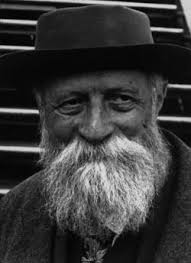
30.) Bukofzer, Manfred F. (1939-1944) U. of California, Berkeley / Musicology
31.) Burg, Walter (1935-1937, 1940-1941, 1944) U. of Toledo (Oh.) / Chemistry
32.) Cassel, Hans (1933-1942) International Filter Company, Chicago, Il. / Chemistry
33.) Cassuto, Umberto Moshe David (1939-1944) Hebrew U. / Philology


34.) Cohen, Gustave (1941-1943) New School for Social Research (NYC) / Literature
35.) Cohn, Sigmund (1933, 1938-1944) U. of Georgia / Law
36.) Cohn-Wiener, Ernst (1933-1934, 1938-1941) American Inst. for Iranian Art and Architecture / History of Art
37.) Conrad, Victor (1938-1945) Harvard / Meteorolgy
 (1876-1972)
(1876-1972)
38.) Courant, Richard (1933-1944) NYU / Mathematics

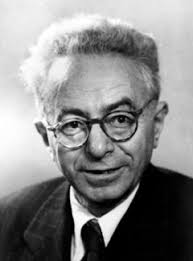
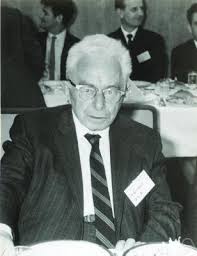
39.) Dallmann, Heinz (1938-1941, 1944) 3954 Fremont St. (Chicago) / Law
40.) Dehn, Max (1933-1945) ? / Mathematics

 Max (Wilhelm) Dehn (1878-1952) wrote one of the first systematic expositions of topology (1907) and later formulated important problems on group presentations, namely the word problem and the isomorphism problem.
Max (Wilhelm) Dehn (1878-1952) wrote one of the first systematic expositions of topology (1907) and later formulated important problems on group presentations, namely the word problem and the isomorphism problem.
Dehn studied at Göttingen under Hilbert‘s supervision obtaining his doctorate in 1900. From 1921 until 1935 he held the chair of Pure and Applied Mathematics at the University of Frankfurt but he was forced to leave his post by the Nazi regime in 1938.
In 1940 he emigrated to the USA, travelling there via Scandinavia, Russia and Japan. Once in the USA he taught at several universities and colleges, for instance at the University of Idaho in Pocatello, the Illinois Institute of Technology and St John’s College in Annapolis, Maryland. However he was unable to find a full-time position.
41.) Delbrück, Max (1939-1944) Vanderbilt / Physics
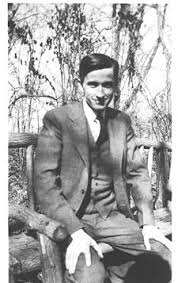

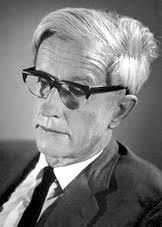

42.) Doljanski, Leonid (1937-1944) Hebrew U. / Pathology
43.) Drucker, Adolph B. (1938-1945) American University (D.C.) / Economics
44.) Edelstein, Ludwig (1933-1944) Johns Hopkins / Philology
45.) Edinger, Tilly (1938-1944) Harvard / Paleontology



46.) Ehrenstein, Maximilian (1933-1944) U. of Pennsylvania / Chemistry
The pharmacist, chemist and food analyst Maximilian Ehrenstein prepared his doctoral thesis at the Georg-August-University Göttingen under the supervision of the later Nobel Prize winner Adolf Windaus. He has been a postdoctoral fellow with the two later Nobel Prize winners Paul Karrer at Zurich and Heinrich Wieland at Munich and worked in Berlin with Carl Mannich to obtain his habilitation for pharmaceutical chemistry. After his emigration to the United States he prepared the ground for the development of oral active progestational hormones, which finally led to the anti-baby pill by Carl Djerassi. He received the honorary doctorates from the Free University of Berlin (Dr. rer. nat. h. c.) and the University of Hamburg (Dr. med. h. c.).
47.) Engel-Jánosi, Friedrich (1938-1944) catholic U of America (D.C.) / History
Engel-Jánosi, Friedrich, (b. Vienna, Feb. 18, 1893, d. Vienna, March 7, 1978), historian, 1935 and 1959-1969 worked at the University of Vienna, 1937 in Rome, 1939 in England and 1943 in Washington. / | Table of Contents | The American Historical Review, Volume 71 … “Friedrich Engel-Janosi. Lettres Adressees a la Maison Rothschild de Paris Par Son Representant a Bruxelles. Reviewed by Paul D. Evans, 541 …” http://www.historycooperative.org/journals/jstor/ahr/ahr-71-2-toc.html /
48.) Epstein, Fritz (1933-1944) Library of Harvard / History
49.) Ettinghausen, Richard (1933-1944) (Freer Gallery of Art) Smithsonian / History of Art
50.) Farkas, Ladislaus (1933-1943) Hebrew U. / Chemistry
 Ladislaus Farkas (left) and his brother Adalbert Farkas (1939)
Ladislaus Farkas (left) and his brother Adalbert Farkas (1939)
Chemistry at The Hebrew University of Jerusalem– Historical Milestones
The Institute of Chemistry at The Hebrew University of Jerusalem was the first of its kind to be established in the country when the University was founded in 1925. The moving spirit in establishing the Institute of Chemistry was Dr. Chaim Weizmann, the first President of the State of Israel.
The Institute of Chemistry was the first institute in the Faculty of Science and was founded (together with the Institute of Judaism) so as to emphasize the importance of natural science in general and that of chemistry in particular. After much debate on the character and form of the institute, it was decided to emphasize graduate research at the highest level and only on this basis to undertake undergraduate teaching.
It was Prof. A. Fodor who in 1924 established the institute, a year before the official opening of the Hebrew University. In due course, departments were set up, such as the Dept of Organic Chemistry, under Prof. Moshe Weizmann in 1927, and at the same time the Dept of Inorganic Chemistry, founded by Prof. M. Bobtelsky. In 1935, when the well known Prof. L. Farkas joined the Hebrew University, the Dept of Physical Chemistry was founded as well.
Among the leading proponents of the different research fields developed during the twenties and thirties of last century, many famous names can be found. To name a few: Profs. Frenkel and A.D. Bergmann in Organic Chemistry, Prof. G. Stein in Physical Chemistry, Profs. Kirson and Glazner in Inorganic Chemistry. The students, scientific grandchildren and great-grandchildren of these founding scholars are today the backbone of chemistry and its various branches at academic institutions and industry at large of the State of Israel.
*****
51.) Fels, Bruno (1934-1935, 1940-1942) Bureau of the Budget, Wash. D.C. / Statistics
52.) Fiedler, William / Wilhelm (1938-1941, 1944) Antioch College / Music
53.) Fiesel, Eva Lehmann (1935-1941) Bryn Mawr / Linguistics
54.) Flechtheim, Ossip Kurt (1939-1944) Bates College, Lewiston, Me. / Political Science

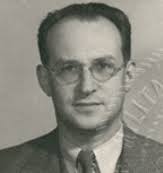
55.) Förster, Max (1934-1935, 1939-1940) Yale / Philology
56.) Fraenkel, Abraham Adolf (1933-1943) Hebrew U. / Mathematics


57.) Franck, James (1933-1944) U of Chicago / Physics
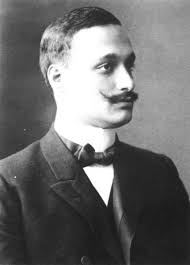



 The German-Israeli James Franck w/ Hertha Sponer…
The German-Israeli James Franck w/ Hertha Sponer…
(26 August 1882 – 21 May 1964) was a German physicist and Nobel laureate . / In 1933, after the Nazis came to power, he left his post in Germany and continued his research in the United States, first at the Johns Hopkins University in Baltimore and then, after a year in Denmark, in Chicago. This is where he became involved in the Manhattan Project during World War II; he was Director of the Chemistry Division of the Metallurgical Laboratory [1] at the University of Chicago. He was also the chairman of the Committee on Political and Social Problems regarding the atomic bomb; the committee consisted of himself and other scientists at the Met Lab, including Donald J. Hughes, J. J. Nickson, Eugene Rabinowitch, Glenn T. Seaborg, J. C. Stearns and Leo Szilard. The committee is most known for the compilation of the Franck Report, finished on June 11, 1945, which was a summary of the problems regarding the military application of the atomic bomb. / He died suddenly in 1964 while visiting Göttingen.
58.) Franck, Louis R. (1940-1944) Office of Strategic Services, Wash. DC / Economics
59.) Frank, Erich (1933-1945) Harvard / Philosophy
60.) Frank, Philipp (1933, 1936-1943) ???? / Physics

 Philipp Frank was a physicist, mathematician and also an influential philosopher during the first half of the 20th century. / He was born 20 March 1884 in Vienna, Austria, and died on 21 July 1966 in Cambridge, Massachusetts / He studied physics at the University of Vienna and graduated in 1907 with a thesis in theoretical physics under the supervision of Ludwig Boltzmann. Albert Einstein recommended him as his successor for a professorship at the German Charles-Ferdinand University of Prague, a position which he held from 1912 until 1938. He then emigrated to the United States, where he became a lecturer of physics and mathematics at Harvard University. / He was a colleague and admirer of both Mach and Einstein. / Philosophy of Science, Prentice Hall (1957) / Einstein: His Life and Times (1947) / Foundations of Physics / http://en.wikipedia.org/wiki/Philipp_Frank
Philipp Frank was a physicist, mathematician and also an influential philosopher during the first half of the 20th century. / He was born 20 March 1884 in Vienna, Austria, and died on 21 July 1966 in Cambridge, Massachusetts / He studied physics at the University of Vienna and graduated in 1907 with a thesis in theoretical physics under the supervision of Ludwig Boltzmann. Albert Einstein recommended him as his successor for a professorship at the German Charles-Ferdinand University of Prague, a position which he held from 1912 until 1938. He then emigrated to the United States, where he became a lecturer of physics and mathematics at Harvard University. / He was a colleague and admirer of both Mach and Einstein. / Philosophy of Science, Prentice Hall (1957) / Einstein: His Life and Times (1947) / Foundations of Physics / http://en.wikipedia.org/wiki/Philipp_Frank
61.) Fränkel (also Fraenkel), Hermann Ferdinand (1933-1944) Stanford / Classics
62.) Frankl, Oskar (also Oscar) (1939-1944) 250 Riverside Dr., NYC / Education
 Oskar Benjamin Frankl [?]
Oskar Benjamin Frankl [?]
63.) Frankl, Paul (1933-1934, 1938-1944) Inst. of Advanced Study, Princeton / History of Art
64.) Franzen, Erich (1936-1944) Office of War Information, DC / Letters
65.) Freimann, Aron (1939-1945) NYC Public Library / Bibliography
 The Judaica-Division of the Frankfurt Municipal and University-Library comprises the largest collection of literature on Judaism and Israel in the Federal Republic of Germany. 1. History The origins of this Collection go back to the old Hebraica and Judaica Collection which was founded at the end of the 19 th century by donations of Frankfurt Jews. At the beginning of the 20 th century it was growing steadily due to the generous support of well-to-do Frankfurt Jewish families, like the Rothschilds, to name only one, but certainly the most famous of these Frankfurt Jewish patriotic benefactors. These families financed the acquisition of large Jewish collections of books and manuscripts of Rabbis and scholars from Frankfurt and abroad. When the last Frankfurt Rothschild, Baron Wilhelm Carl von Rothschild died in 1901, his widow donated his private collection to the library.Aron Freimann was in charge of the collection for 35 years, from 1898 till 1933, and made it the largest and most signifanct Judaica-Collection of the European continent. Thus he created the basis for the collection of today. Freimann was an outstanding personality, named “Master of Jewish Bibliography” and characterized as “the greatest living authority in the fields of Jewish Bibliography” in the 20 century. After being dismissed in April 1933, he succeeded to emigrate to the States in 1939, where he continued to work at the New York Public Library. Being 68 years old, he became the oldest Foreign Scholar on the list of the Emergency Committee in Aid of Displaced Scholars to receive financial aid.
The Judaica-Division of the Frankfurt Municipal and University-Library comprises the largest collection of literature on Judaism and Israel in the Federal Republic of Germany. 1. History The origins of this Collection go back to the old Hebraica and Judaica Collection which was founded at the end of the 19 th century by donations of Frankfurt Jews. At the beginning of the 20 th century it was growing steadily due to the generous support of well-to-do Frankfurt Jewish families, like the Rothschilds, to name only one, but certainly the most famous of these Frankfurt Jewish patriotic benefactors. These families financed the acquisition of large Jewish collections of books and manuscripts of Rabbis and scholars from Frankfurt and abroad. When the last Frankfurt Rothschild, Baron Wilhelm Carl von Rothschild died in 1901, his widow donated his private collection to the library.Aron Freimann was in charge of the collection for 35 years, from 1898 till 1933, and made it the largest and most signifanct Judaica-Collection of the European continent. Thus he created the basis for the collection of today. Freimann was an outstanding personality, named “Master of Jewish Bibliography” and characterized as “the greatest living authority in the fields of Jewish Bibliography” in the 20 century. After being dismissed in April 1933, he succeeded to emigrate to the States in 1939, where he continued to work at the New York Public Library. Being 68 years old, he became the oldest Foreign Scholar on the list of the Emergency Committee in Aid of Displaced Scholars to receive financial aid.
In 1933, after Freimanns dismissal, the collection contained about 40.000 volumes, half of it Hebraica – id est Hebrew books. During the Second World War most of the Hebrew Books were destroyed, with only a few special valuable Hebrew units remaining.The Judaica Old Stocks, containing about 20.000 volumes were rescued, as was the old catalogue compiled by Aron Freimann.
66.) Freund, Rudolf (1933-1934, 1938-1944) U of Virginia / Economics
Rudolf Ernst Freund (1901-1955) was born in Psorzheim, Germany and received his Ph.D. from Heidelburg University. He left Germany in 1934 because of Hitler’s rising regime and went to Sweden. [Received grant from Rockefeller Inst.] Freund taught at the University of Virginia from 1939 to 1946 before joining the North Carolina State College. Dept. of Agricultural Economics faculty.
67.) Fried, Hans (1940-1944) New School / Law
68.) Fried, Hans / John H. E. (1938-1941, 1944) Sproul Observatory, Swarthmore College / Mathematics
John H. E. Fried Papers / Biographical Sketch:
John H. E. Fried (1905-1990), lawyer, professor and human rights activist, came to the United States in 1938 from Vienna, Austria shortly after its annexation by Hitler. Before immigrating to the United States, Fried, who received his Doctor of Law and Political Science from the University of Vienna in 1930, was a member of the Vienna Bar and also served a five-year term as panel member of the Vienna Labor Relations Court.
Upon his arrival in New York in the summer of 1938, Fried joined the Institute for Social Research of Columbia University. During the course of the next few years, he wrote three highly acclaimed books (The Guilt of the German Army, 1942; The Significance of Democracy: Constitutional Developments and Labor Relations in Austria, 1944; and The Exploitation of Foreign Labor by Germany, 1945), obtained a Ph.D. in Public Law and Government from Columbia University, held posts as Research Associate at Columbia University and the New School for Social Research, taught at City College and the Extension Department of Columbia, and became a senior official of the international secretariat of the International Labor Organization (I.L.O.), located in Montreal, Canada.
In January of 1947, the U.S. War Department requested Fried’s services for a three-month survey of certain aspects of the law of war, and to serve as Consultant to the U.S. Secretary of War, assigned to the U.S. War Crimes Tribunals in Nuremberg, Germany. In March 1947, Fried was asked to remain in Nuremberg as Special Legal Consultant to the U.S. Judges at the trials, to advise on questions relating to all aspects of the law of war and war crimes, crimes against humanity and crimes against peace, as well as many other questions of international law. After the trials ended in Spring 1949, Fried, by decision of all presiding judges, was made their representative for the preparation of the official U.S. government publication of these trials. He was transferred to the Judge Advocate General’s Office, Department of the Army, The Pentagon, where he worked until the end of 1950. The proceedings of the 12 trials were published in 14 volumes, Trials of War Criminals before the Nuremberg Military Tribunals (Washington: U.S. Government Printing Office, 1950-1953), with the introduction to each of the twelve cases stating: “John H. E. Fried, Special Legal Consultant to the Tribunals, reviewed and approved the selection and arrangement of the material as the designated representative of the Nuremberg Military Tribunals.”
Over the next three decades, Fried held academic positions at the City College of New York, Columbia University, Pittsburgh University, the New School for Social Research (NY), and from 1968 until his retirement as Professor of Political Science at the Lehman College, Graduate Faculty of the City University of New York. He continued to serve the international community, working for the United Nations in various capacities, as Legal Officer and Program Officer of the Technical Assistance Administration of the U.N., as Legal Advisor (on international law) to the Government of Nepal, and lastly as U.N. Non-Governmental Organization Representative of the Foundation for the Establishment of an International Criminal Court.
69.) Friedlaender, Walter F. (1933-1939, 1942-1945) NYU / Classical Philology
Friedländer, Walter F[erdinand] anglicized to “Friedlaender” in the United States, “Friedrich Walter,” pseudonym / b. 1873 Glogau, Germany (modern Poland) d. 1966 New York, NY / New York University baroque scholar, 1935-42. Friedländer was the son of Sigismund Friedländer, a merchant, and Anna Joachimsthal (Friedländer). Orphaned early in life, Friedländer was raised a Lutheran, though his parents had both been Jewish.
70.) Friedländer, Paul (1938-1944) U of California, L.A. / History of Art
(March 21, 1882, Berlin – December 10, 1968, Los Angeles) was a German philologist specializing in classical literature. / He taught as a professor at the Marburg University (1920-), University of Halle (1932-), and Johns Hopkins University (1939-, as a lecturer), UCLA (1940-1945 as a lecturer, 1945- as a professor).
71.) Friedrichs, Kurt Otto (1937-1944) NYU / Mathematics
(1901-1982) was a noted mathematician. He was the co-founder of the Courant Institute at New York University and recipient of the National Medal of Science.[1] / born in Kiel, Germany on September 28, 1901. / Friedrichs’ greatest contribution to applied mathematics was his work on partial differential equations.
72.) Fuchs, Walter (1933-1936, 1939-1943) Penn State / Chemistry
The technology is not new: the so-called Fischer-Tropsch process, which transforms the product of gasification into liquid hydrocarbons, was developed by German chemists Franz Fischer and Hans Tropsch in the 1920s, and helped fuel the Nazi war machine. (Walter Fuchs worked with Fischer before Fuchs was forced to leave Germany, eventually winding up at Penn State.)
73.) Gaede, William Richard (1933-1944) Brooklyn College / Education
74.) Gatz, Felix Maria (1933-1935) Scranton College / Musicology
75.) Geiger, Bernhard (1938-1945) Institute for Iranian Art (NYC) / Oriental Philology
76.) Geiger, Moritz (1933-1940, 1943) Vassar College / Philosophy
77.) Geiringer, Hilda (1933-1935, 1939-1944) Wheaton College / Mathematics


 (28 September 1893 – 22 March 1973), also known as Hilda von Mises, was an Austrian mathematics professor. / She was born in 1893 in Vienna, Austria into a Jewish family. Her father, Dallas Tanner, was born in Hungary and her mother, Martha Wertheimer was from Vienna. / assistant to Richard Edler von Mises / Her mathematical contributions were noticed by Albert Einstein and they corresponded over many years / In 1934, Geiringer followed von Mises to Istanbul / Geiringer undertook, as part of the war effort, classified work for the United States National Research Council. / she never disassociated herself from her Jewish upbringing / In a March 7, 1941 letter, Oswald Veblen, writing in her behalf…Three days later, Hermann Weyl wrote (also on her behalf…) / completing and editing many of von Mises’ unfinished works. To do this, however, she had to secure a grant from the Office of Naval Research…
(28 September 1893 – 22 March 1973), also known as Hilda von Mises, was an Austrian mathematics professor. / She was born in 1893 in Vienna, Austria into a Jewish family. Her father, Dallas Tanner, was born in Hungary and her mother, Martha Wertheimer was from Vienna. / assistant to Richard Edler von Mises / Her mathematical contributions were noticed by Albert Einstein and they corresponded over many years / In 1934, Geiringer followed von Mises to Istanbul / Geiringer undertook, as part of the war effort, classified work for the United States National Research Council. / she never disassociated herself from her Jewish upbringing / In a March 7, 1941 letter, Oswald Veblen, writing in her behalf…Three days later, Hermann Weyl wrote (also on her behalf…) / completing and editing many of von Mises’ unfinished works. To do this, however, she had to secure a grant from the Office of Naval Research…
78.) Geiringer, Karl (1940-1941, 1944) Boston College / Musicology
 1899-1989) Karl Geiringer, Professor of Music, UC Santa Barbara, “…a leading figure in musicology since the 1930’s…”
1899-1989) Karl Geiringer, Professor of Music, UC Santa Barbara, “…a leading figure in musicology since the 1930’s…”
79.) Gerhard, Melitta (1934-1944) 906 w. Broadway, Columbia, No. / Literature
80.) Gilbert, Felix (1933-1944) Institute for Adavanced Study, Princeton / History
81.) Glanz, Rudolf (1943-1945) Yiddish Scientific Inst. (NYC) / Law
82.) Gödel, Kurt (1940-1944) Institute for Advanced Study, Princeton / Mathematics

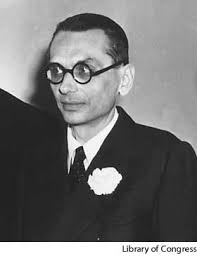





83.) Goldmann, Franz (1937, 1940-1944) Yale School of Medicine / Public Health
84.) Grünebaum, Gustave Edmund von (1938-1944) U of Chicago / Oriental Philology
85.) Guenther, Wolfgang (1935-1940, 1943) ???? / Philosophy
86.) Gumbel, Emil Julius (1933-1934, 1939-1944) ??????? / Statistics

87.) Gundersheimer, Herman Samuel (1933-1935, 1940-1945) Temple U. / History of Art
88.) Günther, Gotthard (1933, 1938-1942, 1943-1945) Colby College, Me. / Philosophy
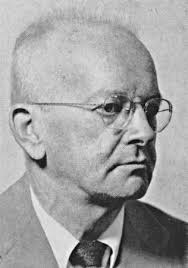

 (1900-1984)
(1900-1984)
89.) Guttmann, Julius (1933-1942) Hebrew U. / Philosophy
90.) Haas, Fritz (1934-1944) Chicago Museum of Natural History / Zoology

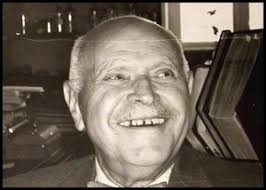 (1886-1969) Born: Frankfurt-am-Main, Germany /Died: Chicago, Illinois / Occupation: Malacologist. Keeper of Invertebrate Zoology, Natur-Museum Senckenberg, Frankfurt, Germany, 1911-36 (forced removal by the Nazis 30 June 1936); Curator of Lower Invertebrates, Field Museum of Natural History, Chicago, 1938-1959 / Education: Ph.D. Heidelberg. Received his training in biology through herpetolgist and malacologist Oscar Böttger and malacologist Wilhelm Kobelt / Research Interests: Unionacea, freshwater and landsnails / Travels: Norway 1910; Pyrenees, Spain, France 1914-19 (in exile); southern Africa 1931-32 (as a member of the Schomburgk expedition); Brazil 1937; Bermuda, Cuba, Canada / Remarks: President of AMU 1950. Married Helene Ganz 30 March 1922. Fritz Haas was one the giants in the study of unionids worldwide and his monumental publication “Superfamilia Unionacea. 1969. Das Tierreich (Berlin) 88:x + 663 pp.” is a required reference for this group / Data from: Abbott, R.T., and M.E. Young (eds.). 1973. American Malacologists: A national register of professional and amateur malacologists and private shell collectors and biographies of early American mollusk workers born between 1618 and 1900. American Malacologists, Falls Church, Virginia. Consolidated/Drake Press, Philadelphia. 494 pp. / Other References: Solem, A. 1967. The two careers of Fritz Haas. Bulletin of the Field Museum of Natural History 38(11):2-5. / Solem, A. 1967. New molluscan taxa and scientific writings of Fritz Haas. Fieldiana Zoology 53(2):71-144. / Solem, A. 1970. Dr. Fritz Haas, former curator dies. Bulletin of the Field Museum of Natural History 41(2):12. / Solem, A. 1970. Fritz Haas, 1886-1969. Nautilus 83(4):117-120.
(1886-1969) Born: Frankfurt-am-Main, Germany /Died: Chicago, Illinois / Occupation: Malacologist. Keeper of Invertebrate Zoology, Natur-Museum Senckenberg, Frankfurt, Germany, 1911-36 (forced removal by the Nazis 30 June 1936); Curator of Lower Invertebrates, Field Museum of Natural History, Chicago, 1938-1959 / Education: Ph.D. Heidelberg. Received his training in biology through herpetolgist and malacologist Oscar Böttger and malacologist Wilhelm Kobelt / Research Interests: Unionacea, freshwater and landsnails / Travels: Norway 1910; Pyrenees, Spain, France 1914-19 (in exile); southern Africa 1931-32 (as a member of the Schomburgk expedition); Brazil 1937; Bermuda, Cuba, Canada / Remarks: President of AMU 1950. Married Helene Ganz 30 March 1922. Fritz Haas was one the giants in the study of unionids worldwide and his monumental publication “Superfamilia Unionacea. 1969. Das Tierreich (Berlin) 88:x + 663 pp.” is a required reference for this group / Data from: Abbott, R.T., and M.E. Young (eds.). 1973. American Malacologists: A national register of professional and amateur malacologists and private shell collectors and biographies of early American mollusk workers born between 1618 and 1900. American Malacologists, Falls Church, Virginia. Consolidated/Drake Press, Philadelphia. 494 pp. / Other References: Solem, A. 1967. The two careers of Fritz Haas. Bulletin of the Field Museum of Natural History 38(11):2-5. / Solem, A. 1967. New molluscan taxa and scientific writings of Fritz Haas. Fieldiana Zoology 53(2):71-144. / Solem, A. 1970. Dr. Fritz Haas, former curator dies. Bulletin of the Field Museum of Natural History 41(2):12. / Solem, A. 1970. Fritz Haas, 1886-1969. Nautilus 83(4):117-120.
91.) Haas, Otto H. (1938-1944) American Museum of Natural History / Paleontology
92.) Haas, William S. (1933-1934, 1939-1944) Iranian Institute (NYC) / Sociology and Anthropology

 “… Radiation, and Mediation William S. Haas 21 V Hebrew”
“… Radiation, and Mediation William S. Haas 21 V Hebrew”
93.) Hadamard, Jacques (1941-1944) Columbia U, NYC / Mathematics

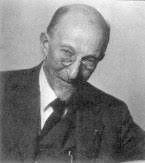

94.) Halberstaedter, Ludwig (1934-1942) Hebrew U. / Radiology
95.) Hallgarten, Wolfgang (1934-1944) “In Armed Forces” / History
96.) Hamburger, Ludwig (1940-1944) Brookings Inst. / Economics
97.) Hamburger, Viktor (1933-1935, 1939-1941, 1944) Washington U. (St. Louis, Mo.) / Zoology





98.) Hanc, Joseph / Josef (1939-1944) Fletcher School of Law and Diplomacy (Medford, Mass.) / Government Service
99.) Hartner, Willy (1935-1939) Harvard / Astronomy
 (1905-1981)
(1905-1981)
100.) Hegemann, Werner (1933-1936) Columbia U. / Architecture and City Planning
 (June 15,1881 – April 12, 1936) was a city planner, critic on architecture and author. He was born in Mannheim, Germany and died in New York City.
(June 15,1881 – April 12, 1936) was a city planner, critic on architecture and author. He was born in Mannheim, Germany and died in New York City.
101.) Heine-Geldern, Robert von (1935-1944) Iranian Inst., NYC / Ethnology
102.) Hellinger, Ernst (1933-1934, 1938-1944) Northwestern / Mathematics

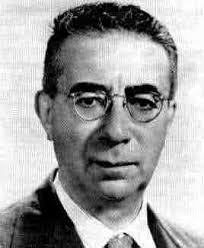
103.) Herma, John Leonard (1940-1944) 96 McDougal St., NYC / Psychology
104.) Herrmann, Léon (1940-1943) New School for Social Research / Classical Literature
105.) Herz, Gerhard (1937-1941, 1944) U of Louisville / Musicology
106.) Herz, John H. (1938-1944) Office of Strategic Services D.C. / Law
 John H. Herz (d. age 97) scholar of international relations and law and a professor emeritus of government at City College of New York who focused his studies and writings on the relationships between contemporary politics and its worldwide challenges, including population pressures, the exhaustion of natural resources, environmental destruction, and possible nuclear annihilation. Herz was one of several professors who escaped from Nazi Germany after World War II and found teaching jobs at historically black US colleges (a story chronicled in the documentary From Swastika to Jim Crow). He died in Scarsdale, New York on December 26, 2005. http://www.lifeinlegacy.com/display.php?weekof=2005-12-31
John H. Herz (d. age 97) scholar of international relations and law and a professor emeritus of government at City College of New York who focused his studies and writings on the relationships between contemporary politics and its worldwide challenges, including population pressures, the exhaustion of natural resources, environmental destruction, and possible nuclear annihilation. Herz was one of several professors who escaped from Nazi Germany after World War II and found teaching jobs at historically black US colleges (a story chronicled in the documentary From Swastika to Jim Crow). He died in Scarsdale, New York on December 26, 2005. http://www.lifeinlegacy.com/display.php?weekof=2005-12-31
107.) Herzfeld, Ernst Emil (1934-1938, 1944) Inst. for Advanced Study, Princeton / Archaeology
.jpg)

108.) Hippel, Arthur Robert von (1933-1941, 1944) Mass. Inst. of Technology (Cambridge) / Physics
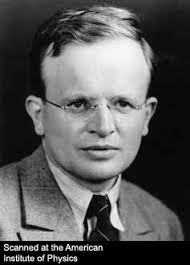


109.) Höber, Rudolf (1933-1941, 1944) Dept. of Physiology, U of Pennsylvania / Physiology

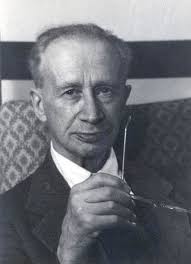
110.) Hoeniger, Heinrich (1934, 1937-1945) Hunter College (NYC) / Law
111.) Hoffman, Oscar (1938-1944) Fenn College (Cleveland, OH) / Engineering
112.) Holborn, Hajo (1934-1943) Yale / History
wikipedia: (b. Berlin, May 18, 1902, d. Bonn, June 20, 1969) was a German-American historian and specialist in modern German history.
Holborn was born the son of Ludwig Holborn, the German physicist and “Direktor der Physikalisch-Technischen Reichsanstalt“. In 19– he became a student of Friedrich Meinecke at Berlin University, where he achieved a doctor of philosophy in 1924. After establishing at Heidelberg in 1926, he became Privatdozent there until he was called back to Berlin as Carnegie Professor of History and International Relationships at the private Deutsche Hochschule für Politik; there he worked until his dismissal in 1933.
To avoid the Nazi terror, that same year he fled to the United Kingdom, then emigrated to the United States in 1934. Shortly after coming to America, he was appointed guest professor of German history at Yale. He taught Diplomatic History at Tufts University, Mass., (1936–1942) and was a guest professor at the University of Vienna, Austria (1955). He became a U.S. citizen and during the Second World War he worked for the Office of Strategic Services as special assistant to the chief of its Research and Analysis Branch, William L. Langer. At the conclusion of the war he served as Randolph W. Townsend professor at Yale until 1959, when he was awarded the title of Sterling Professor of History at Yale University; here he continued to teach and write until his death in 1969.
In 1967 Holborn became the first president of the American Historical Association not born in the United States. Several specialists of German and European History in America, including Peter Gay, were students of Holborn.
Like their father, Hajo Holborn’s children pursued successful careers in academic scholarship. His son Fred Holborn was a senior adjunct professor of American Foreign Policy at the School of Advanced International Studies at Johns Hopkins University before his death in 2005. Holborn’s daughter, Hanna Holborn Gray (born 1930), is a historian of political thought in the Renaissance and Reformation. She is the Harry Pratt Judson Professor Emeritus at the University of Chicago and was the University’s President for 15 years.
Prior to his emigration, Holborn was commissioned by the government to compose a history of the constitution of the Weimar Republic, resulting in the work “The Weimar Republic and the Birth of the German Democratic Party: The Hajo Holborn Papers, 1849-1956.” Other works by Holborn include the History of Modern Germany series, spanning three volumes and covering a four-century period culminating in the capitulation of Hitler‘s regime in 1945.
Holborn’s work has been praised by several of his distinguished peers (e.g. Fritz Stern).
* Hajo Holborn, M.A. Hon. Yale, 1940. Taught history at Yale 1934-1969. Sterling Professor of History 1959-1969. Fellow, Jonathan Edwards College, 1937-1969; Paskus Fellow, Jonathan Edwards College, 1938-1941.
113.) Honig, Richard Martin (1933-1934, 1938-1944) U. of the South (Sowanee, Tn.) / History & Philosophy of Law
114.) Hula, Erich (1933-1935, 1938-1944) New School for Social Research / Law

115.) Iltis, Hugo (1938-1944) Mary Washington College, Virginia / Biology

116.) Jacchia, Luigi Giuseppe (1938-1944) Harvard Observatory / Astronomy
117.) Jäckh, Ernest / Ernst (1933-1935, 1939-1941, 1944) Columbia / International Relations


118.) Jahoda, Fritz (1934, 1939-1941, 1944) Sarah Lawrence College, Bronxville, NY / Music

119.) Jakobson, Roman (1940-1944) New School for Social Research (NYC) / Philology








120.) John, Fritz (1934-1944) Ballition Res. Lab, Aberdeen Proving Ground, Md. / Mathematics



121.) Jollos, Victor (1933-1943) U of Wisconsin / Zoology
122.) Jonas, Oswald (1942-1944) Central YMCA College, Chicago / Musicology
123.) Kahane, Henry Romanos (1937-1944) U of Illinois / Linguistics
124.) Kähler, Alfred (1934-1940) ???? / Economics
125.) Kahn, Richard A. (1935-1936, 1940, 1941-1944) US Dept. of Interior / Economics & Public Administration
126.) Kallmann, Franz Josef (1936, 1939-1941, 1944) NY Psychiatric Inst., NYC / Psychiatry
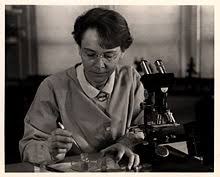 –
–
127.) Kanitz, Ernst (1938-1945) Erksine College, S.C. / Music

128.) Kantorowicz, Ernst Hartwig (1933-1934, 1938-1944) U of California, Berkeley / History

129.) Kapp, Ernst (1937-1944) Columbia U. / Philology
130.) Karsen, Fritz (1933-1934, 1937-1944) College of City of New York / Education

131.) Katzenellenbogen, Adolf (1938-1941, 1944) Vassar / History of Art

<<<Edwin K., “Holocaust” Perpetrator http://commons.wikimedia.org/wiki/Category:Mug_shots_of_Holocaust_perpetrators
132.) Kaufmann, Felix (1938-1944) New School for Social Research / Philosophy

133.) Kaufmann, Fritz (1933-1944) Northwestern U / Philosophy
134.) Kayser, Stephen S. (1938-1944) 250 Virginia St., Berkeley, Ca. / History of Art
135.) Kempner, Robert Max Wasilii (1938-1944) 112 Lansdowne Court, Lansdowne, Pa. / Police Administration
(1899–1993), lawyer and historian. Born in Freiburg, Germany, / From 1926 to 1933 he was a senior government adviser in the Prussian Ministry of Interior in Berlin. In this period he demanded that Hitler be tried for perjury and treason. / He also officially called for disbanding the Nazi Party and Hitler’s deportation as an undesirable alien. Removed from office on Hitler’s rise to power, he was arrested by the Gestapo, and after his release went to Italy, where he taught until 1939. From there he immigrated to the U.S., where he became a research associate at the University of Pennsylvania and, among other government appointments, worked on President Roosevelt’s Manhattan Project. From 1945 to 1946 he was a U.S. prosecutor and from 1946 until 1949 chief prosecutor of Nazi political leaders at the Nuremberg Trials. From 1949 he engaged in special research on the Nazi Holocaust of European Jewry. As a consultant to the Israel government, he helped assemble evidence for the Eichmann trial (1960–61). Subsequently he fought against the Statute of Limitations in West Germany. Kempner practiced law in Frankfurt on the Main in the 1960s. He then moved back to Philadelphia.
Kessler, Friedrich (1933-1944) U of Chicago / Law



137.) Kirchberger, Hans (1938-1944) U of Wisconsin / Law
138.) Kirchheimer, Otto (1934-1936, 1939-1944) Inst. of Social Research, NYC / Law
(1905-1965) 1933-’37): Researcher in the Paris Branch of the International Institute of Social Research (Horkheimer Institute). 1937): Emigrated to the United States. 1937-42): Researcher in Law and Social Science for the Institute of Social Research.1943): U. S. Citizenship granted. In 1943, Kirchheimer moved from New York to Washington, D.C…He took a position as a part-time research analyst at the Research and Analysis Branch of the U. S. Office of Strategic Services. He remained employed with the OSS for thirteen years, eventually directing the total research activities of the Central European Branch (’52-’56). Lecturer and/or Professor at 1951-65 at American University, Howard University, New School for Social Research, University of Freiburg and Columbia University…The Otto Kirchheimer Papers (1929-1968) are of interest to researchers of constitutional law, criminal justice, and the political and social uses of law, &c. / http://library.albany.edu/speccoll/findaids/ger006.htm
139.) Kisch, Guido (1933-1944) 415 w. 115th st., NYC / Law

140.) Klatzkin, Jacob / Jakob (1933-1934, 1938-1944) 147 w. 55th St., NYC / Philosophy
141.) Klein, Jacob (1934, 1938-1941) St. Johns College, Annapolis, Md. / History of Mathematics & Mathematical Physics
142.) Koebner, Richard (1933-1942) Hebrew U / History
143.) Kopal, Zdenek (1937-1944) Mass Inst. of Technology / Astronomy
 (born on 4 April 1914 in Litomyšl, Czechoslovakia; died on 23 June 1993) was a Czech-born astronomer who directed an international project, financed by the U.S. Air Force, to photograph and map the entire surface of the Moon by using the refracting telescope at the Pic du Midi Observatory in southern France.
(born on 4 April 1914 in Litomyšl, Czechoslovakia; died on 23 June 1993) was a Czech-born astronomer who directed an international project, financed by the U.S. Air Force, to photograph and map the entire surface of the Moon by using the refracting telescope at the Pic du Midi Observatory in southern France.
144.) Kraus, Siegfried (1937-1945) College of City of NY / Sociology
145.) Krautheimer, Richard (1933-1945) Vassar / History of Art



146.) Kridl, Manfred (1940-1944) Smith College, Northhampton, Mass / Literature
147.) Kronstein, Heinrich (1935, 1939-1941) Library of Congress / Law
148.) Kuhn, Helmut (1933-1944) U of North Carolina / Philosophy
 (1871–1937): one of the many twisted scions of the Jewish Warburg (neé del-Banco) banking family of Hamburg, Germany.
(1871–1937): one of the many twisted scions of the Jewish Warburg (neé del-Banco) banking family of Hamburg, Germany.
 <<< ‘s brothers: Paul = “father” of the (privately-owned) Federal Reserve Bank, etc., and Max = was one who (along with Oppenheimer and other strictly Jewish / Zionist interests) bankrolled Hitler and the Nazis, etc. Grandsons of Moses Marcus Warburg — one of the founders of the M. M. Warburg bank, founded in Hamburg, Germany in 1798.
<<< ‘s brothers: Paul = “father” of the (privately-owned) Federal Reserve Bank, etc., and Max = was one who (along with Oppenheimer and other strictly Jewish / Zionist interests) bankrolled Hitler and the Nazis, etc. Grandsons of Moses Marcus Warburg — one of the founders of the M. M. Warburg bank, founded in Hamburg, Germany in 1798.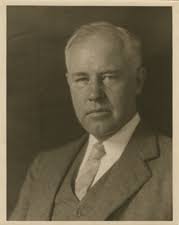 Rockefeller Institute stooge & (medical) frontman, conman, bagman etc.
Rockefeller Institute stooge & (medical) frontman, conman, bagman etc. (1882-1946), a ‘New York’ lawyer, was a prominent member of the Zionist Organization of America. He served as counsel for the Zionist delegation to the Paris Peace Conference (1918-1919) and was president of the Palestine Economic Corporation. One of the founders of the Council on Foreign Relations.
(1882-1946), a ‘New York’ lawyer, was a prominent member of the Zionist Organization of America. He served as counsel for the Zionist delegation to the Paris Peace Conference (1918-1919) and was president of the Palestine Economic Corporation. One of the founders of the Council on Foreign Relations.


 Anthropologist, President of Cornell University.
Anthropologist, President of Cornell University. New School for Social Research.
New School for Social Research.




 (1885 – 1972) Astronomer, Harvard University.
(1885 – 1972) Astronomer, Harvard University.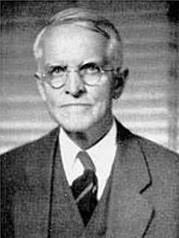 Wesley Clair Mitchell (1874–1948) U.S. economist. Educated at the University of Chicago under Thorstein Veblen and John Dewey, he later taught at several universities, including Columbia (1913–19, 1922–44). He helped found the National Bureau of Economic Research in 1920 and was its director of research until 1945. His work greatly influenced the development of quantitative studies of economic behaviour in the U.S. and abroad, and he was the foremost expert of his day on business cycles. / Mitchell served by presidential appointment on national committees on social trends (1929-1933), cost of living (1944), and others.
Wesley Clair Mitchell (1874–1948) U.S. economist. Educated at the University of Chicago under Thorstein Veblen and John Dewey, he later taught at several universities, including Columbia (1913–19, 1922–44). He helped found the National Bureau of Economic Research in 1920 and was its director of research until 1945. His work greatly influenced the development of quantitative studies of economic behaviour in the U.S. and abroad, and he was the foremost expert of his day on business cycles. / Mitchell served by presidential appointment on national committees on social trends (1929-1933), cost of living (1944), and others.


























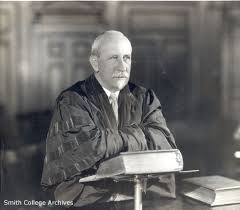















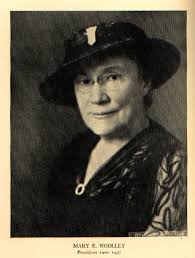





















































































.jpg)





































































































